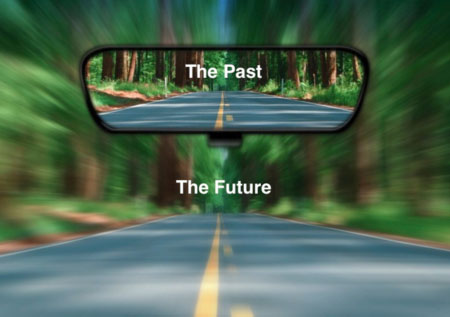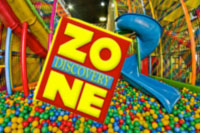
Vol. XIV, No. 6, July 2014
- Editor's corner
- Let's all go out and SHOUT!!!
- Foundations LITE - August 19, Atlanta GA
- Failure or success?
- The 6 types of wine drinkers
- Future proofing projects
- Bowling, an industry in two different centuries
- A frozen dairy nation
- Cultural changes to leisure time and its impact on LBEs
- Canada's anti-spam law
Future proofing projects
Planning a new location-based entertainment or FEC project or the renovation of one is never an easy process. And as the saying goes, “The product is only as good as the process that creates it.” And this is the problem most LBEs and FECs have, they use a flawed process, so they never end up with what we call a “future proofed” project, a project that will stand up to the test of time and be relevant to the consumer and successful not only when it opens, but also for many future years after it opens.
The economics of the issue are quite simple. Let's say the project is projected to generate a 20% rate of annual return on cost. At that rate, it will take five years to just get the investment returned. For those first five years there is no return, just payback of the original investment. So for the LBE to be profitable, it will need to continue to generate the 20% return starting in year six and for many more years into the future. So the LBE needs to be developed with a long-time profit horizon, and that requires a mix and concept that will work for many, many years into the future, not just for a few initial years after opening.
Here's the big obstacle to accomplishing that. Most projects are planned in a rear view mirror. The projects are based on LBE or FEC models that were conceived in the past, rather than what will work in the future. It's like driving down the road only looking in the rear view mirror to find your way to a destination. The LBE's destination has to be the future, not the past.

What typically happens is the entrepreneur or owner models their center or renovation after some existing centers or combination of centers they have examined. The issue here is that those centers were conceived and planned a number of years ago. Even for a recently opened center, its development process could easily have started two or more years ago. So, by the time the new center or remodel is completed and opened, it could be three, four or more years after what it was modeled after was developed. So it's concept, its mix, its design is already years old when it opens and could even be partially obsolete by then.
Yes, it is a good idea to examine existing centers when planning a new one or a renovation. But you need to keep in mind that when you are looking in the rear view mirror, you're looking at models from the past, where centers have been, not what they need to be in the future. And yes, the view of the future can be a little fuzzy, but a lot can be determined about what will work the best in the future by diving deep into trends analysis, as trends will usually paint a picture of what the future holds.
By trends, we don't just mean with location-based entertainment, as that is only one very small part of all leisure activities that compete for discretionary time and money. And by trends, we don't just mean the physical real world. Today, the digital world is a significant part of that leisure time universe and it, more than anything else, is disrupting the current entertainment landscape at an increasingly accelerating speed compared to as recently as a decade or so ago. Just think about how digital connectivity and the smartphone has transformed your life. The smartphone is just seven years old!
We are in the mist of a profound transformative and disruptive shift from physical to digital entertainment and socialization, and it's happening much faster than most people realize.
Randy White, CEO
White Hutchinson Leisure & Learning Group
And the trends research can't just be limited to entertainment and leisure. To understand the consumer of the future, the trends analysis needs to look at multiple industries and disciplines, including hospitality, retail, restaurants and dining, the service industry, as well as overall cultural, demographic and socioeconomic/lifestyle trends, which includes not only discretionary income spending, but also the use of leisure time and changing consumer values.
Unfortunately, most developers and owners in the LBE industry never get out of their industry's box to understand where culture and consumers are heading in the future. So they basically end up cloning concepts they see in the rear view mirror.

There is, however, one advantage to looking in the rear view mirror, provided that mirror can see back several decades in time. It is amazing how the location-based entertainment center industry's history repeats itself in some ways. People with that long-term historical perspective have the ability to understand what is a true trend versus what is a fad or a strategy that will eventually hit a dead end and result in industry roadkill. For example, over the past 25 years, we have seen a number of new attractions become the hottest new thing, then over expand, and then die out. Perhaps the earliest example was the Discovery Zone chain and soft-modular-play centers. That cycle has repeated itself a number of times since then with other concepts. People with a long-range memory of the industry's history can usually sense that type phenomenon when it first seems to appear and hold off jumping in.
Yes, future proofing is not easy. It takes enormous amounts of research and a historical knowledge about the industry. That is one of the reasons our company spends approximately 20% of our time researching and analyzing cultural and consumer evolution on a wide perspective as well as within the LBE industry, so we can design and produce future proof projects for our clients.
Vol. XIV, No. 6, July 2014
- Editor's corner
- Let's all go out and SHOUT!!!
- Foundations LITE - August 19, Atlanta GA
- Failure or success?
- The 6 types of wine drinkers
- Future proofing projects
- Bowling, an industry in two different centuries
- A frozen dairy nation
- Cultural changes to leisure time and its impact on LBEs
- Canada's anti-spam law


